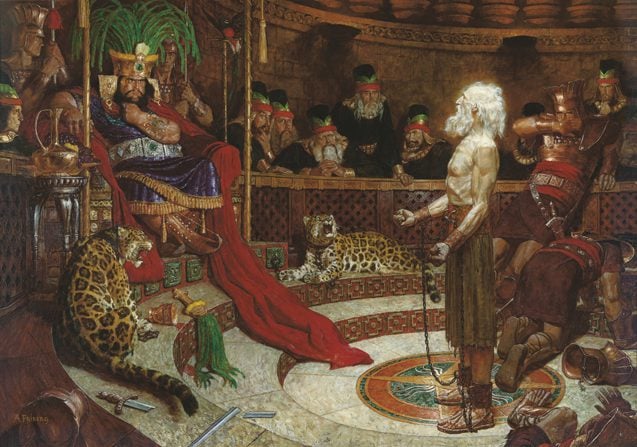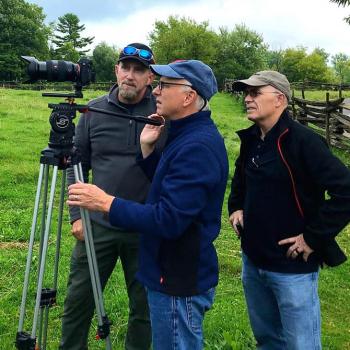
“The Book of Mormon includes a history of an ancient people who migrated from the Near East to the Americas.”
So opens the new official statement on “Book of Mormon Geography” from the Church of Jesus Christ of Latter-day Saints.
Today has been a very busy and rather long day. Still, in stolen moments, I’ve been watching a small handful of overeager critics of the Church with amusement. They’ve been peering desperately at the distant horizon, hoping for a sign, any sign, that the Church is abandoning its longstanding claim that the Book of Mormon is an authentically ancient record. And now they think that the sign has finally come. (Or perhaps they’re just feigning it. Frankly, it’s quite difficult to tell whether this particular bunch have ever actually been serious.)
“The Book of Mormon includes a history of an ancient people.”
Get it? The statement doesn’t say that the Book of Mormon is “a history.” It doesn’t say that it “is an accurate history.” It doesn’t say that the Book of Mormon “is in its totality a history.” It says merely that the Book of Mormon includes a history.
Eureka! According to these folks, what the Church is carefully saying here — en route, they devoutly hope, to its eventually abandoning the historicity of the Book of Mormon altogether — is that only a portion of the book is genuine historical writing, while the remainder of it is presumably something else.
Well of course it is!
But they badly, badly want the Church to be saying that that something else is not real history. That it’s not historically accurate. That it’s merely mythical. Imaginative fiction. Allegory, perhaps.
Rather silly stuff, I’m afraid.
Many parts of the Book of Mormon offer narrative history, but many parts of it don’t. The book is, overall, a historical narrative, but a host of other things are embedded within that narrative — e.g., sermons, prophecies, instructions, epistles, blessings, fatherly counsels, and, yes, allegories. This is obvious to anybody who reads the book with even the slightest degree of attention, and pointing it out is scarcely novel, let alone revolutionary. It certainly doesn’t suggest any retreat at all from the claim that the Book of Mormon is authentically ancient.
1 Nephi 1 is a historical narrative, yes. But 1 Nephi 8 is, overwhelmingly, a description of a vision. As are 1 Nephi 11-14. 2 Nephi 4 is, for the most part, a poetic lament. Multiple chapters in 1 Nephi and 2 Nephi are quotations from the prophet Isaiah. They’re examples of prophecy, not of historiography. Jacob 5 is — expressly — an extended allegory. So is Alma 32. And they’ve always been recognized and understood as allegories. In Mosiah 13, the prophet Abinadi is expounding the ten commandments, not recounting a historical narrative. Alma 5, like many chapters of the Book of Mormon, contains a sermon. (Compare 3 Nephi 11-16, for example.) Alma 36-42 records a father’s advice to his three sons. Moroni 3-5 contains not historical accounts but instructions regarding priesthood ordination and the blessing of the sacrament. Moroni 8-9 features two letters from Mormon to Moroni. Moroni 10, rather than being a historical narrative, is an exhortation to then-future readers. And so on.
So, in fact, the Book of Mormon does include a history of an ancient people, just as the Church’s statement indicates. But it’s far more than merely a historical narrative. Even relatively casual readers of the Book of Mormon have always known this.
Helplessly hoping . . .
Awaiting a word. . . .
Wordlessly watching,
He waits by the window
And wonders
At the empty place inside. . . .
Stand by the stairway,
You’ll see something
Certain to tell you confusion has its cost.











